Don’t go getting all emotional on me, as I confess that this hardcore horticulturist doesn’t have a real problem with fake plants – especially if they are GOOD fakes and are used well, typically where living plants are not practical.
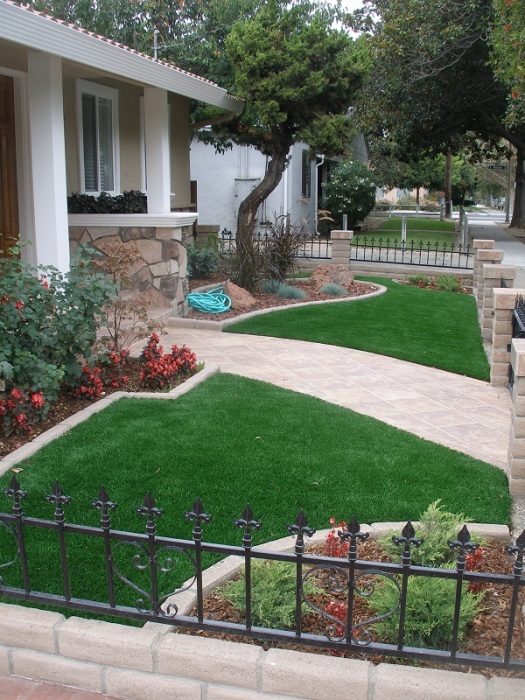
I mean, faux is faux; to the self-proclaimed horti-holy among us, there will never be a consensus on whether a shedding, one-shot “real” Christmas tree shipped from hundreds of miles away is more important emotionally than the practicality of an artfully-mastered artificial one that lasts for years. It’s usually a matter of degrees anyway. Pardon me, but anyone who has ever worn polyester, eaten a soy burger, put on a wig or mascara, replaced a lawn with a patio or deck, or set out a hummingbird feeder with sugar water, can Just. Shut. Up.
As a longtime lawn management expert, I certainly appreciate a well-maintained lawn (especially when a few wildflowers are left here and there for the butterflies). But, unless you are perfectly content with a mow-what-grows meadow lawn, there is nothing more artificial, costly, frustrating, and environmentally-damaging than a manicured lawn.


Truth is, for many people a real live lawn is not practical – or desirable, especially in a shaded garden where grass simply won’t grow, at least for long. Alternatives such as groundcovers, mulches, paving, whatever, are okay… why not synthetic grass?
Alternatives to lawn grasses can be found that work well and look pretty close
Nice gardens, even in England
I’m not the only convert to the appropriate use of well-made, modern synthetic grass.
I have seen artificial lawns in countless situations where, to be honest, grass simply won’t work. High end places, like botanic gardens trying to cut maintenance costs and reduce environmental issues related to fertilizers and pesticides, and wedding lawns and reception areas where real grass doesn’t work all year or is naturally too wet or soft underfoot after rains or irrigation, or it stains shoes, or simply can’t hold up under heavy foot traffic. The decisions to go synthetic are often made by horticulturists who honestly would rather have real grass, but just can’t justify its costs, management, and pest issues.
San Diego Botanic Garden wedding lawn and tree island at Dallas Arboretum
And I can’t begin to tell you how many terrific English cottage gardens have replaced their manicured ryegrass and fescue lawns with patches of synthetic grass that even I sometimes have to look closely, sometimes even feel, to see what’s real or not. Fact is, the fake ones often look better than the real ones next door – especially in winter, and during droughts.
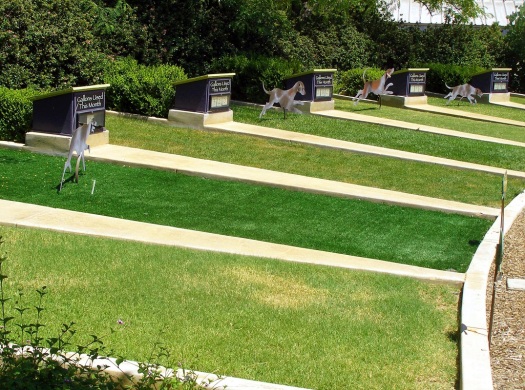

Besides, just as artificial Christmas trees have improved dramatically since the days of silver tinsel or blue-green plastic, and silk poinsettias blow the old sun-faded red nylon ones away, anyone who has ever shopped at crafts stores lately knows that modern fake plants are pretty convincing from just a few feet away.
My friend Rick Griffin, whose landscape architectural creations have appeared in countless magazines, uses swaths of artificial grass in his celebrated personal garden, and very few visitors even notice other than how good it works in difficult transitions between other paving materials.
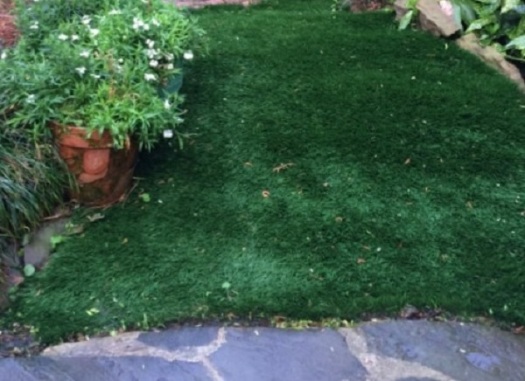
Rick Griffin faux grass carpet
Beyond the Original Astroturf
Modern syn-lawns, using recycled plastic and sometimes even natural bio-based plant polymers, have come a LONG way since the first AstroTurf was invented in 1965 under the name “Chemgrass” (renamed after being installed in the Houston Astrodome).
Across nearly all brands, the stuff that’s on the market today looks and feels real. On top of seeing and feeling experiencing it firsthand in many gardens, I ordered samples of several and found them to be just fine. Really.
Modern synthetic grasses are made of sometimes two or three different shape and color filaments and fibers that closely mimic in color, shape, and length – putting green short, regular grass long, or somewhere in between – of several commonly used turfgrasses (rye, fescue, Bermuda, centipede, zoysia and more), so they blend better alongside what’s grown in regular lawns in your area.
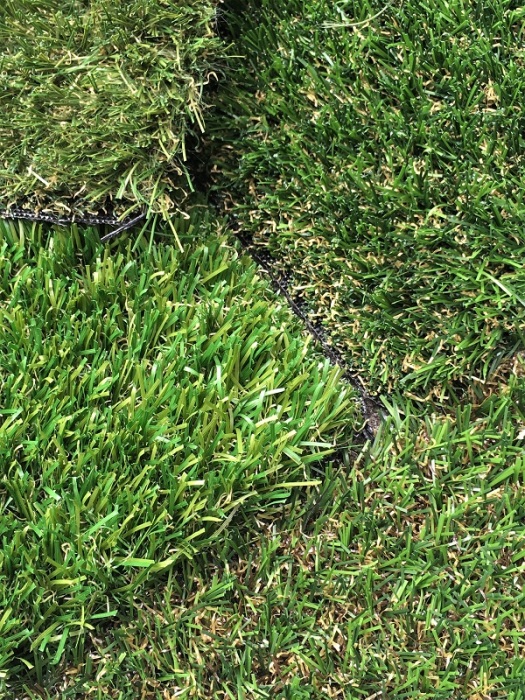
Notice in the photo above how for that extra “wow, that looks real” effect, some, such as the samples provided by the Trulawn experts , even have light brown fibers woven into other color fibers, just like natural thatch, which creates a truly realistic effect.
Artificial turf is made of filaments threaded into a backing that lets water through. You lay it out by first removing all weeds, smoothing the existing soil, covering with a densely-packed base of finely crushed granite or other aggregate, and topping with a weed barrier cloth. Just like with indoor carpet, wide strips are glued tightly and seamlessly together; special pins fasten edges and perimeters firmly in place. Finally, a dusting with special sand or rubber crumbs fills between the blades and gives a better look and feel.
Like it or Not, Here to Stay
If you can get past the ugly memories of the earliest versions of Astroturf, at least out of curiosity check out some of the new synthetic grasses; though there are some really awful fake brands, as always, you still get what you pay for. Really good ones run anywhere from $3 or much more per square foot (doesn’t include the cost of professional installation), but within a few years they more than pay for themselves. Especially if you use the stuff in small spots, or places that are really hard to grow grass in, or areas with a lot of wear and tear like around a pool or where kids or dogs run regularly. In fact, certain types are now made for pets and kids (watch out for “rug burn”), and have special properties that reduce and dissipate the problematic sunny-day heat build-up.
Other than occasional blowing of fallen leaves and other debris, about all it takes is an occasional raking to fluff it up, and maybe a cleansing with a commercial or home-made washing liquid. If you have pets, you will need to let droppings dry before removing, and regularly wet down urine to keep it from smelling (and it does. BAD).
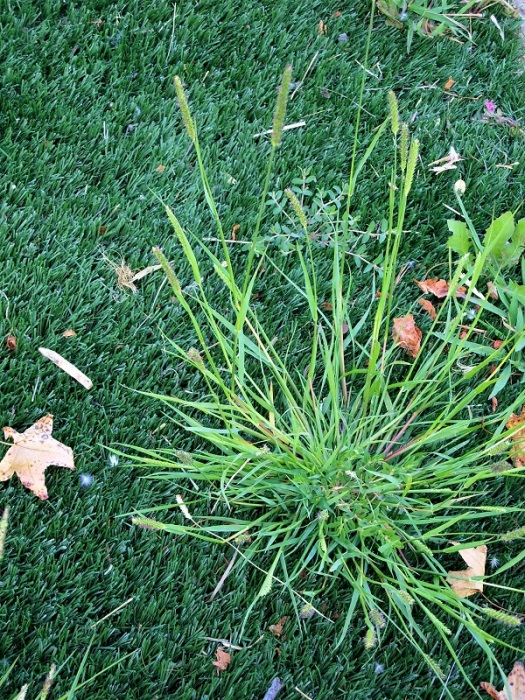
Here are some of the more obvious pros and cons of artificial grass lawns. Pick the reason(s) or excuse(s) that speak to you the most, and make your own intellectual decision one way or the other.
Pros:
- Versatile for areas where grass won’t grow or thrive or is impractical
- Made from recycled (and some natural) materials
- Wide range of naturalistic textures, colors, and quality
- Durable
- Look pretty good (if I do say so myself), including in the winter
- Feels soft like natural grass
- Non-toxic – safe for children and pets
- NO mowing – saves time, water, fertilizer, equipment and fuel costs
- Reduces noise, power equipment emissions, and pollution
- Quick draining
- No insect or disease problems, dramatically reduced weed issues
- Doesn’t get muddy
- UV stabilized
- Durable – holds up and can last 15 or more years with good care
Cons:
- Expensive to install, takes years to recoup the costs
- Gets hot in full sun (though some use heat-reducing materials)
- Can be rough on knees and elbows (“turf burn”)
- Has to be raked, blown, and occasionally cleaned with water and mild detergents
- Can smell really bad if pet waste isn’t cleaned up or washed away regularly
- Can get weedy if not installed correctly and kept clean
- Not easily recycled when in need of replacing
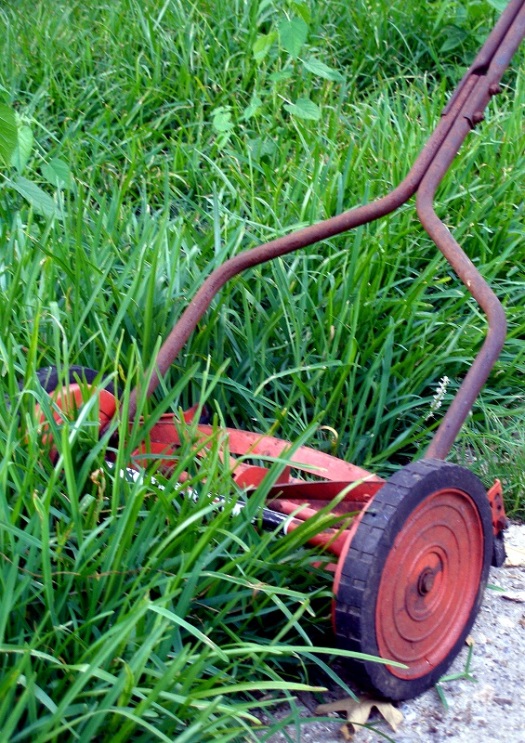
Call it what you want – artificial, synthetic, fake, conservation, whatever – but it works amazingly in difficult areas where it isn’t possible or simply not practical to grow natural turfgrass, or not worth the non-stop maintenance effort.
Main thing is, don’t let the emotional tugs of live cut vs. artificial Christmas tree, or the poor quality of half-century old Astroturf, ruin your day. And, might I suggest, most certainly don’t hold your nose at those folks who choose to go the other way.
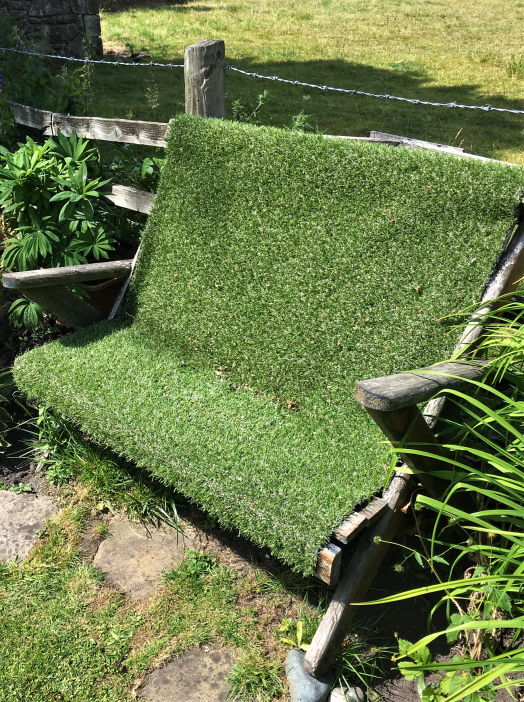







As much as I detest artificial turf, I detest unused or useless real grass lawns even more! Where we lived in town, we all had lawns in front merely because they looked good. However, NO one used them! Everyone else payed gardeners to mow them, and wasted serious volumes of water on them, but still they got NO use! If I let mine get a bit too brown, neighbors complained. I so wanted to just paint it green! I could not use the space for a garden because it was out front. It was just useless space that consumed a lot of resources.
Anyway, I know I just repeated some of what you just said.
I happen to be a hard core horticulturist. Much of my work involves lawns that are ‘maintained’ by ‘gardeners’ who water so much that the lawns are always swampy. I mean, they are so swampy that they kill the trees within. (That is where I come in.) Of course this happens after the ‘gardeners’ sold the client on installing new sod that is comprised of a new and improved grass that needs less water.
Properly maintained real grass is good for those of us who actually use and appreciate it. If children commonly played in the garden, a modest real grass lawn would be nice and justifiable. My second choice would be no lawn at all, even if that meant wood chips, or even bare soil (which is quite common in Trona). If I wanted my useless lawn in town to look good for the neighbors, artificial turf would be a serious consideration.
LikeLike
Nice article, good for lot”s information very very thank for this information .
https://turfgrassfortlauderdale.com
LikeLike
Synthetic grass can accommodate large play sets and feels natural to the touch.
http://turfgrassorlando.com
LikeLike
Cons also include zero oxygen production and dead soil underneath your plastic turf. Nothing lives in plastic turf; real grass is still nature.
Artificial makes sense in dry areas but in the Pacific Northwest not so much.
Also see Science October 2018 vol 362, issue 6411,
pp. 148-149
“An alternative urban green carpet” by Maria Ignatieva
LikeLiked by 1 person
The use of synthetic turf reduces the need to fertilize lawns, which makes our streams and oceans healthier. When juduciouly used in smaller areas, it benefits our fragile environment.
LikeLike